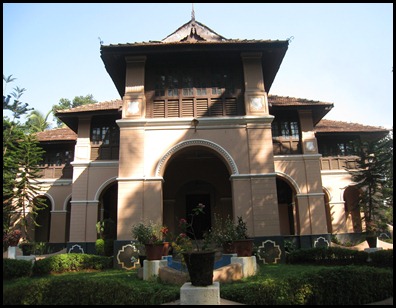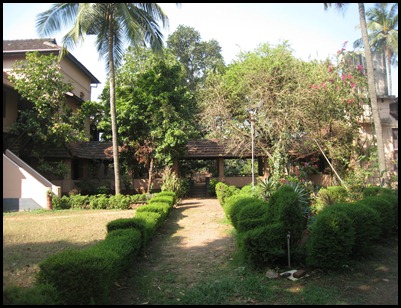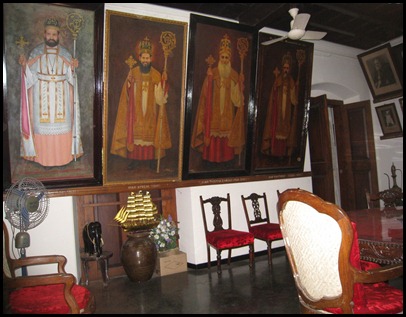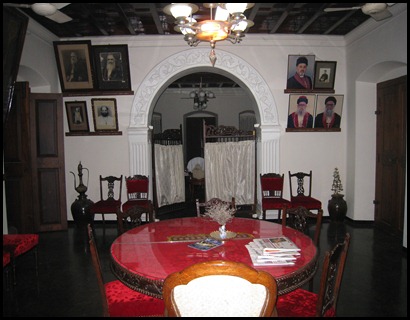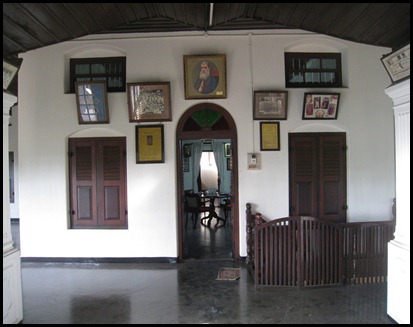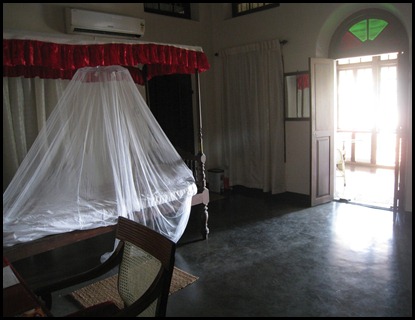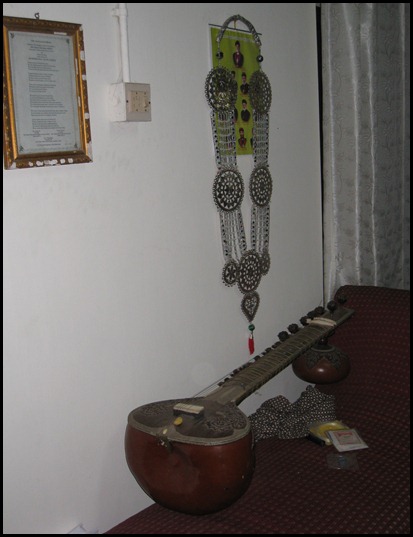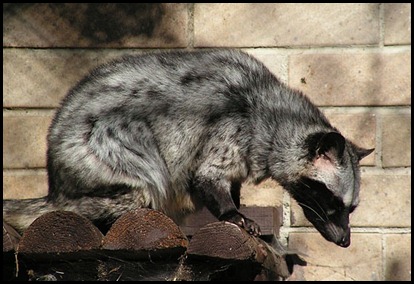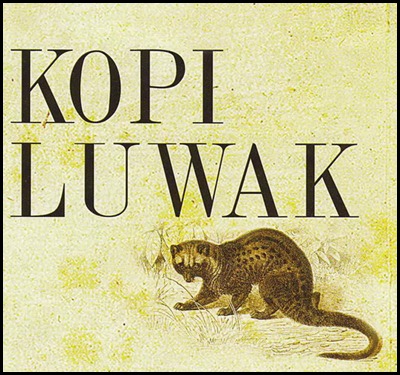SCHOLARSHIP OF SAINT BASIL THE GREAT 2012
The Metropolitical Palace compound sits right off the High Road, now renamed Mar Timotheus after a former Metropolitan, in the centre of Thrissur. It was built by the same Mar Abimalek Timotheus. The compound includes gardens full of coconut and banana trees and well as many flowering shrubs and vines that I do not know the names of. A back gate leads to the church grounds and the tombs of the former Prelates of the church.
When you enter the Palace you are immediately aware you are not in a typical Indian church residence. The house is full of Assyrian Prelates in full Metropolitical or Patriarchal splendour staring solemnly down on you from the walls.
The downstairs of the Palace has a dining room and rooms for meetings, secretaries including the Metropolitical secretary’s cell as well as a small permanently air conditioned room that houses the church’s famous collection an ancient Assyrian manuscripts. Upstairs is the Metropolitan’s residence, sitting room and a guest room. A wide enclosed veranda surrounds the whole second floor.
My room is large and simple with a bed (I brought my own mosquito net) and a desk and chair. There is a bathroom off of it which has a hot water heater you can switch on. Bucket baths are the name of the game here but I am used to them since my time in Africa. There is a small gecko lizard that lives behind the commode and sticks his head out to watch me when I come in.
Amidst the Assyrian artefacts, paintings and photographs there are some quintessentially Indian touches such as the old portrait of the last Maharaja as a young man, the Metropolitan’s sitar in his sitting room,
and the faded print of Ghandi and Nehru on the wall of the veranda.
There is a cook, a cleaner, a driver, and a priest (Father Jacks) - the Metropolitan’s personal secretary. Father Jacks lives here. The routine of the house is like clockwork: breakfast a 8, morning tea at 10, lunch at 12, afternoon tea at 3 and dinner at 7.
Morning and afternoon tea is literally a cup of tea and a few slices of apple or segments of an orange. Dinner is very simple, some evening just a fried egg and a couple of rounds of toast. Breakfast and lunch are a different matter. I understand that His Beatitude eats simply and as an Assyrian Bishop he does not eat meat. Still the food is wonderful even though it is usually only rice and two vegetable curries for lunch.
However, breakfast is unlike anything I have ever had before. I am familiar with Indian food from my decade in Britain but these meals were always at night. I had never had an Indian breakfast. It is nothing like our breakfasts, here it is another full savoury meal. For the base there is either: puttu – cylinders of roughly pounded rice and coconuts steamed together in hollowed out bamboo; appam – soft, cupped rice pancakes that are spongy in the centre; iddiappams – a rice based vermicelli; iddlis – circular, steamed rice cakes; or vada – fried chickpea flour doughnuts. These are eaten with: egg masala – spicy, onion based gravy; kadala curry – a spicy, dark brown curry made with ginger, chick peas, and pepper; sambar – a chilli sour broth; or chatni – a tangy paste made with ground coconut and chopped green chillies. Some morning there is also a bowl of fresh coconut milk to mix in with the main savoury. Almost everything for breakfast is HOT! Breakfast comes with a pot of thick milky chai to reduce the flare. To end there are fresh, small, sweet bananas from the garden. Quite simply the ‘simple’ monastic breakfast fare in the house is the best breakfast I have ever had.
Although the house is filled with fascinating things I am afraid I find the most interesting thing in the house, besides the Metropolitan himself, is the resident that lives on the third floor. The ceilings are high in the British style and so, if there is ever a need, the huge space above the second floor beneath the roof can be made into a usable third floor, it even already has windows. This has not been done and so it is really just a huge attic with high ceilings. At night you can hear its occupant racing about as it leaps from the attic onto the tiled roof and launches itself onto the coconut trees. It also tends to growl to itself an awful lot.
It is, as the locals call it in Malayalam, a ‘Wood’ or ‘Tree Dog’ or even better known as a Toddy Cat. We would call it an Asian Palm Civet.
As a foreigner, I am charmed knowing an exotic animal is leaping about and growling just above my ceiling night after night. However I must admit that since it has taken to sleeping above my bathroom ceiling and pulling back bits of the ceiling boards so it can peer in at me and growl the novelty has started to wear off . The psychological pressure of having a lizard peek out at me from behind the commode and a civet staring at me from a hole in the ceiling while growling is beginning to give me a case of shy bladder.
Early this morning at 3am when I went to vacate my bladder the civet was particularly annoyed at me for having disturbing it. So as I stood there relieving myself it relieved itself on me! So I took a very early morning bucket bath washing Asian Palm Civet urine out of my hair. It continued to growl at me the whole time. It was around that time that my whole ‘Toddy Cat’ fascination came to an end.
An interesting factoid - the most expensive coffee in the world is made by feeding coffee berries to this creature and then harvesting the beans afterwards and (thankfully) washing and roasting them. It is called Kopi Luwak. A pound of Kopi Luwak can go for $600 and for wild Kopi Luwak expect to pay closer to $3000. See, all you need to be rich is a hungry ‘Toddy Cat’, fresh coffee berries, a bucket of water, and a great deal of resolve.
